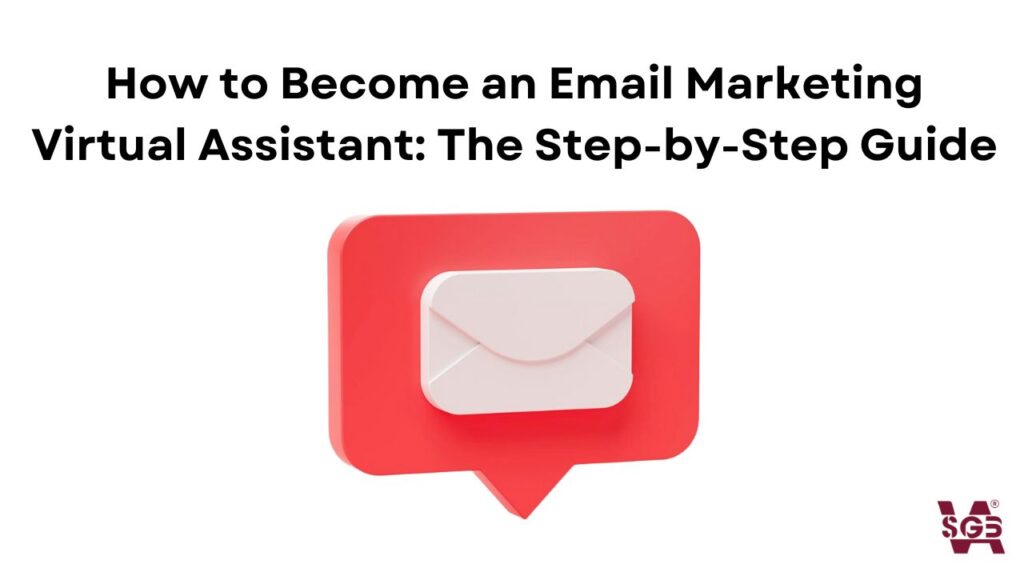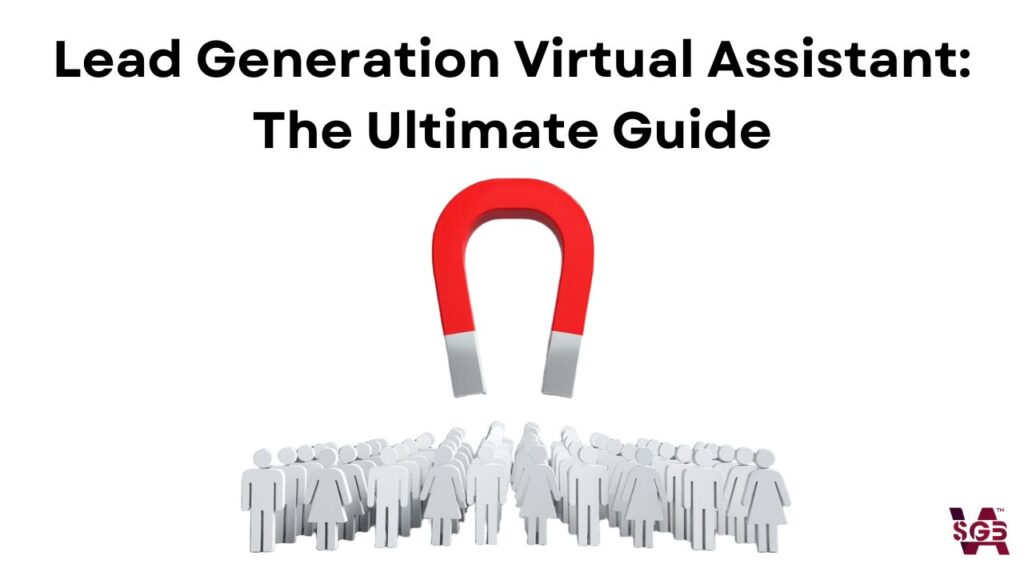Amazon Work from Home Data Entry Jobs: How Much Can You Earn & Is It Worth It?

Amazon Work from Home Data Entry Jobs: How Much Can You Earn & Is It Worth It? Athika Rahma SEO Specialist Virtual Assistant at SGBVA April 2, 2025 Category Thinking about working from home with Amazon? Amazon work from home data entry jobs sound like an easy way to earn money remotely. No degree? No problem. Minimal experience? You’re still in the game. But before you jump in, let’s get real: How much do these jobs actually pay? Is the work worth your time? And how do you land a legit position (without falling for scams)? This guide has all the answers—let’s break it down. 1. What Are Amazon Data Entry Jobs? Amazon work from home data entry jobs involve handling large amounts of data, ensuring accuracy, and organizing information into digital systems. These roles can be part-time or full-time, depending on Amazon’s hiring needs. Typically, Amazon hires data entry specialists for various departments, including logistics, inventory management, customer service, and administrative tasks. As a data entry worker for Amazon, your tasks may include: Inputting and updating data in Amazon’s internal databases. Organizing product details, orders, or customer information. Verifying the accuracy of data and correcting errors when needed. Handling spreadsheets and reports related to inventory, shipments, or customer transactions. Assisting with administrative support tasks as required. While the job itself is straightforward, attention to detail and efficiency are crucial to performing well. 2. Qualifications for Amazon Data Entry Jobs Amazon work from home data entry jobs typically looks for candidates with the following qualifications: High school diploma or equivalent (some roles may prefer college experience). Strong typing skills (50-60 words per minute with high accuracy is often preferred). Experience with Microsoft Excel, Google Sheets, or other data management tools. Ability to work independently and meet deadlines. Excellent attention to detail and problem-solving skills. Previous data entry experience is a plus but not always required. Read more: How to Land Amazon Data Entry Jobs Remote as a Virtual Assistant 3. How Much Can You Earn? Amazon work from home data entry jobs offers various data entry roles, and pay can vary based on location, experience, and job responsibilities. Here’s what you can generally expect: Hourly Pay: On average, Amazon data entry jobs pay around $19.47 per hour, with a range of $16.35 to $21.88 (global pay, according to Indeed). Annual Salary: If you’re working full-time, you could earn approximately $36,000 to $42,000 per year (global pay, according to Indeed). Location-Based Differences: If you live in states like California, you might see slightly higher wages, around $19.22 per hour. 4. How to Apply for Amazon Data Entry Jobs Amazon doesn’t always have data entry roles available, but when they do, you can find them on their official careers page. Follow these steps to apply for Amazon work from home data entry jobs: Go to Amazon’s official job site at amazon.jobs Click on “Sign In” or “Create Account” to register with your email. Complete your profile. Fill in your personal details, work experience, and skills. Search for jobs. Use keywords like “data entry” or “work from home” in the search bar. Check job descriptions carefully. Read the qualifications, responsibilities, and location requirements. Prepare your resume. Highlight your typing speed, accuracy, and familiarity with data tools. Submit your application. Click “Apply Now” and follow the prompts to upload your resume and cover letter. Take the assessment (if required). Amazon may ask you to complete a typing or data accuracy test. Read more: Admin Virtual Assistant: The Simplest Way to Become a Remote Worker 5. Tips to Get Hired for an Amazon Data Entry Job Getting Amazon work from home data entry jobs can be competitive, so here are some actionable tips to improve your chances: Boost Your Typing Speed and Accuracy Use online tools like TypingTest.com or Keybr.com to practice. Aim for at least 50-60 words per minute with minimal errors. Familiarize Yourself with Amazon’s Systems While Amazon doesn’t require prior experience with its internal tools, getting comfortable with Excel, Google Sheets, and basic database management will make you a stronger candidate. Optimize Your Resume Emphasize relevant skills such as data entry, accuracy, organization, and efficiency. Tailor your resume to include keywords from Amazon’s job postings. Read more: How to Create a Simple Resume Format for Virtual Assistants: The Complete Guide Prepare for Online Assessments Many Amazon work from home data entry jobs require accuracy and speed tests. Practice with free online typing tests to improve your performance. Gain Freelance or Temporary Data Entry Experience Websites like Upwork and Fiverr offer freelance data entry gigs that can help you build experience and demonstrate your skills to potential employers. Avoid Scams Only apply through Amazon’s official job portal. Avoid any listings requiring upfront payments or making unrealistic salary promises. 6. Is It Worth It? Before jumping in, it’s important to consider whether Amazon work from home data entry jobs match your expectations. Here are some things to keep in mind: Pros: Work-from-Home Flexibility. If you need a remote job that allows you to work from anywhere, this can be a great fit. Minimal Entry Requirements. No advanced degree or specialized skills are required, making it accessible for many job seekers. Steady Paycheck. Unlike freelance or gig-based work, Amazon offers stable pay and potential benefits if hired as a full-time employee. Low-Stress Job. Unlike customer service roles, Amazon work from home data entry jobs part time don’t require constant interaction with customers, making it ideal for those who prefer independent work. Cons: Repetitive Tasks. Data entry is often monotonous, requiring long hours of inputting and verifying data. Limited Career Growth. Unlike tech or administrative roles, data entry positions don’t always offer clear pathways to promotion. Job Availability is Unpredictable. Amazon work from home data entry jobs aren’t always available., so you may need to check frequently and apply quickly when jobs are posted. Competition is High. Many people look for remote jobs, making these roles highly competitive. Potential for Eye Strain and Fatigue. Long
Step-by-Step Guide to Building Your Social Media Management Portfolio

Step-by-Step Guide to Building Your Social Media Management Portfolio Athika Rahma SEO Specialist Virtual Assistant at SGBVA April 2, 2025 Category Want to land more clients or job offers? A strong social media portfolio is your best asset. It proves your skills, shows real results, and makes you stand out from the competition. Think about it—would you trust a social media manager who just says they can grow engagement? Or one who shows a case study of how they boosted engagement by 300%? If you want to get hired, your portfolio needs to do the talking. This guide walks you through exactly how to create a social media management portfolio that grabs attention and wins opportunities. Why Should You Make a Social Media Management Portfolio? Most social media managers rely on their resumes and work experience to secure jobs or clients. But the reality is, a social media management portfolio is far more persuasive than a list of past roles. Here’s why: Employers and clients want proof of your skills. A portfolio helps you stand out in a crowded field. Showcasing real results builds trust and credibility. It’s easier to negotiate higher rates when you have data to back up your expertise. If you’re serious about social media management, creating a portfolio isn’t optional—it’s a must. Now, let’s talk about what to include. Read more: Social Media Management for Beginners: A Guide to Getting Started How to Create a Social Media Management Portfolio A great social media management portfolio isn’t just a collection of screenshots and captions—it’s a strategic presentation of your best work. Every section should serve a purpose and guide potential clients or employers through your expertise. 1. Introduction Your introduction is the first thing people see in your social media manager portfolio for beginners—so make it count. Instead of a generic bio, use this space to quickly establish credibility. social media manager portfolio for beginners Example:I am [Your Name], a data-driven social media manager with experience in content strategy, engagement, and paid advertising. I help businesses build strong online communities and generate leads through targeted social media campaigns. This introduction immediately tells people what you do, how you work, and why they should care. 2. Your Services A common mistake? Many social media managers assume clients already know what they do. That’s not the case. Spell out exactly what services you provide: Social media strategy development Content creation (text, images, videos, reels, and stories) Community management Paid advertising (Facebook Ads, Instagram Ads, LinkedIn Ads, TikTok Ads) Influencer marketing Analytics and reporting 3. Your Best Work (Case Studies) Case studies are the most important part of your social media management portfolio. Why? Because they show how you solve real-world problems. Each case study should follow this format: Client Name/Project Name Objective: What problem were you solving? Strategy: What steps did you take? Execution: How did you implement the plan? Results: Use measurable outcomes (e.g., follower growth, engagement increase, revenue impact). Visuals: Include screenshots or links to your work. Example:Instagram Growth Campaign for XYZ Brand Objective: Increase brand awareness and engagement. Strategy: Created a mix of organic and paid strategies, launched interactive Instagram Stories, and collaborated with influencers. Execution: Designed a monthly content calendar, scheduled posts, and monitored analytics for optimization. Results: 40% follower growth, 5X higher reach, and a 25% engagement rate improvement. Read more: 15+ Resume Summary Examples to Land Your Remote Job 4. Performance Metrics & Analytics Numbers matter. If you want your social media management portfolio to be persuasive, include real performance data. Showcase measurable achievements: Increase in followers (e.g., grew Instagram followers by 25% in 3 months) Higher engagement rates (e.g., boosted engagement from 3% to 5%) Click-through rates (e.g., improved ad CTR to 2.5%) Website traffic growth (e.g., increased monthly traffic by 50%) Sales conversions (e.g., raised conversion rate to 3%) Customer retention (e.g., improved returning customers by 15%) How to calculate key social media metrics: Follower Growth (%): (New Followers – Old Followers) ÷ Old Followers × 100 Example: A brand’s Instagram page grew from 10,000 to 12,500 followers in 3 months. Follower Growth: (12,500 – 10,000) ÷ 10,000 × 100 = 25% increase Click-Through Rate (CTR) (%): (Clicks ÷ Impressions) × 100 Example: A Facebook ad had 500 clicks and was seen by 20,000 people. CTR: (500 ÷ 20,000) × 100 = 2.5% Engagement Rate (%): (Total Engagements ÷ Followers or Reach) × 100 Example: A LinkedIn post received 500 interactions (likes, comments, shares) from 10,000 followers. Engagement Rate: (500 ÷ 10,000) × 100 = 5% Website Traffic Growth (%): (New Traffic – Old Traffic) ÷ Old Traffic × 100 Example: A Pinterest strategy increased monthly website visitors from 5,000 to 7,500. Traffic Growth: (7,500 – 5,000) ÷ 5,000 × 100 = 50% increase Sales Conversions (%): (Sales ÷ Website Visitors) × 100 Example: An Instagram shop had 120 sales from 4,000 visitors. Conversion Rate: (120 ÷ 4,000) × 100 = 3% Return on Ad Spend (ROAS): Revenue from Ads ÷ Ad Spend Example: A TikTok ad campaign generated $5,000 in sales from a $1,000 ad budget. ROAS: 5,000 ÷ 1,000 = 5X (5 times what was spent) 5. Client Testimonials Word-of-mouth marketing is powerful—even in your social media management portfolio. Including testimonials builds trust and reassures potential clients that you can deliver results. Example:“[Your Name] helped us increase our engagement by 200% in six months. Their data-driven approach transformed our social media presence.” – [Client Name] 6. Skills Employers Look For Your social media management portfolio should highlight the skills that make you an effective social media manager. Employers and clients are looking for professionals who demonstrate: An awareness of trends Great time management and planning A love of community, conversation, and customer service A passion for storytelling An eye for design A talent for understanding statistics and analytics A deep knowledge of social media platforms Desire to learn new tools and processes A knack for building strong relationships Read more: 7 Essential Virtual Assistant Hard Skills for Resume
How to Use Automated Email Marketing and Boost Conversions

How to Use Automated Email Marketing and Boost Conversions Athika Rahma SEO Specialist Virtual Assistant at SGBVA April 2, 2025 Category Automated email marketing is one of the most powerful tools for businesses looking to scale customer engagement, nurture leads, and drive revenue. When done right, it delivers personalized, timely, and relevant messages to your audience—without requiring constant manual effort. But how can you leverage email automation effectively? In this in-depth guide, we’ll cover everything from the fundamentals of automated email marketing to advanced strategies that can help you boost conversions and maximize ROI. What is Automated Email Marketing? Automated email marketing is the process of sending pre-scheduled or trigger-based emails to subscribers based on their behaviors, actions, or predefined criteria. It allows businesses to engage customers at the right time with relevant content while reducing manual effort. Instead of manually crafting individual emails for each subscriber, businesses set up email workflows that run on autopilot—delivering personalized experiences at scale. Here’s a breakdown of how email automation functions: Define Triggers – An action (such as signing up for a newsletter, making a purchase, or abandoning a cart) triggers an email sequence. Set Up Email Sequences – A series of automated emails designed to guide the subscriber toward a goal (e.g., completing a purchase or staying engaged with your brand). Segment Your Audience – Using data like behavior, demographics, and interests to tailor messaging. Personalize Content – Leveraging subscriber details (name, purchase history, location) to make emails feel more relevant. Measure & Optimize – Tracking key metrics (open rates, CTRs, conversions) to continuously improve performance. Why Automated Email Marketing is a Game-Changer If you’re still manually sending emails, you’re missing out. Here’s why automated email is essential: 1. Saves Time & Boosts Efficiency Automation eliminates repetitive tasks, allowing your marketing team to focus on strategy rather than execution. 2. Increases Engagement & Personalization Emails triggered by user actions feel more relevant than generic mass emails, increasing open rates and engagement. 3. Drives Higher Conversions & Sales Personalized, behavior-based emails (such as cart recovery or product recommendations) help convert subscribers into paying customers. 4. Improves Lead Nurturing Drip campaigns educate and build trust with leads, guiding them smoothly through the buyer’s journey. 5. Provides Valuable Analytics Automated email platforms offer detailed insights into subscriber behavior, campaign performance, and ROI, helping you refine your marketing strategy. Read more: How to Land Email Marketing Jobs Remote as a Virtual Assistant in 2025 Types of Automated Emails & Examples Here are the most effective types of automated email marketing campaigns, with real-world use cases: 1. Welcome Email Sequences The welcome email is your first impression—it sets expectations and builds rapport. Trigger: A new subscriber joins your list. Example: Subject: “Welcome to [Brand Name]! Here’s What to Expect” Content: A warm introduction, value proposition, and call-to-action (e.g., “Check Out Our Bestsellers”) 2. Drip Campaigns (Lead Nurturing Emails) Drip campaigns guide leads through a structured journey, gradually leading them to a purchase decision. Trigger: A subscriber downloads a free resource or signs up for a webinar. Example: Email 1: “Thank You for Downloading! Here’s Your Free Guide” Email 2 (Day 3): “How [Product/Service] Can Help You [Achieve Benefit]” Email 3 (Day 7): “See How Others Have Transformed with [Product/Service]” Email 4 (Day 10): “Exclusive Discount Just for You!” 3. Abandoned Cart Recovery Emails A well-timed reminder (often with an incentive) can recover lost revenue. Trigger: A customer adds items to their cart but doesn’t complete the purchase. Example: Subject: “Oops! You Left Something Behind…” Content: Image of the abandoned product, a reminder, and a CTA (“Complete Your Purchase Now”) with a discount. Read more: 10+ Jobs That You Can Work From Home in 2024 4. Post-Purchase Follow-Ups Keeps customers engaged, encourages repeat purchases, and enhances satisfaction. Trigger: A customer makes a purchase. Example: Email 1 (Day 1): Order Confirmation & Thank You Email 2 (Day 5): Product Care Tips & FAQs Email 3 (Day 14): Request for Review or Referral Incentive 5. Re-engagement Emails (Win-Back Campaigns) Encourages inactive users to re-engage with your brand. Trigger: A subscriber hasn’t opened an email or made a purchase in X days. Example: Subject: “We Miss You! Here’s 15% Off to Welcome You Back” Content: A friendly message, special offer, and CTA to revisit your website. Best Practices for Automated Email Marketing Success Setting up email automation is just the first step. To get the most out of it, you need to follow best practices that ensure your emails are engaging, effective, and well-received by your audience. Here are the automated email marketing strategy to maximize your results: 1. Choose the Right Email Automation Platform There are many automated email marketing platforms available, and choosing the best one depends on your business size, goals, and budget. Some popular options include: Mailchimp – Great for small businesses with easy-to-use automation features. Omnisend – Ideal for e-commerce, with deep integrations for abandoned cart recovery and product recommendations. HubSpot – Best for businesses that need CRM integration with email automation. Klaviyo – A go-to option for e-commerce brands looking for personalized email flows. ActiveCampaign – Offers advanced automation with AI-driven insights. What to look for: Advanced segmentation and personalization options. Pre-built automation workflows. A/B testing capabilities. Integration with other marketing tools (CRM, e-commerce platforms, analytics tools). Take time to explore the features and pick a platform that aligns with your business needs. Read more: 15 Free Virtual Assistant Resources Tools Guide to Boost Your VA Business 2. Understand Your Audience & Segment Your List One-size-fits-all emails don’t work. Your audience consists of different types of customers, each with unique needs. Segmentation allows you to send highly relevant, targeted emails instead of generic messages. Here are key ways to segment your email list: By Behavior: Identify how subscribers interact with your brand—track past purchases, browsing history, and email engagement. By Demographics: Categorize based on factors like location, age, industry, or job role. By Engagement Levels: Separate active subscribers from inactive ones and create re-engagement
How to Become an Email Marketing Virtual Assistant: The Step-by-Step Guide

How to Become an Email Marketing Virtual Assistant: The Step-by-Step Guide Athika Rahma SEO Specialist Virtual Assistant at SGBVA March 17, 2025 Category Want to build a profitable Virtual Assistant business? Specializing in email marketing could be your golden ticket. Email marketing isn’t just about sending emails—it’s about delivering the right message to the right audience at the right time. With an impressive return on investment, businesses are constantly searching for experts who can help them maximize the power of email marketing. That’s where your skills come in. This guide will walk you through everything you need to know: Types of email marketing Must-have skills Best tools How to get started Pricing strategy Let’s dive in! What is Email Marketing? Email marketing is a direct and highly effective digital marketing strategy that involves sending targeted messages to an audience to drive engagement, build relationships, and increase sales. Unlike social media, where posts may get buried by algorithms, emails go straight to a subscriber’s inbox, making them one of the most reliable ways to reach potential customers. And here’s why it matters: Unmatched ROI (Return of Investment) – Email marketing delivers an average return of $42 for every $1 spent. Direct Audience Access – No algorithm filtering content; emails land directly in the inbox. Automation & Scalability – Once set up, email sequences can generate leads and sales on autopilot. Personalization – Segmented and personalized campaigns lead to higher engagement and conversions. Measurable Results – Every open, click, and purchase can be tracked for continuous optimization. Cost-Effective Marketing – Email marketing remains one of the most affordable and high-impact strategies for businesses of all sizes. Types of Email Marketing Campaigns That Drive Results To be a successful Email Marketing VA, you need to master different types of email campaigns. Here are the most effective ones: 1. Welcome Emails The first interaction a subscriber has with a brand. Sets expectations and builds initial engagement. Often includes a welcome offer or a lead magnet. 2. Newsletters Regular updates that keep subscribers engaged. Includes industry news, valuable tips, and company updates. Helps maintain brand presence and trust. 3. Promotional Emails Used for sales, discounts, and product launches. Often includes limited-time offers to create urgency. 4. Transactional Emails Includes order confirmations, receipts, and shipping updates. Keeps customers informed and builds trust. 5. Drip Campaigns Automated email sequences designed to nurture leads over time. Guides subscribers through a sales funnel step-by-step. 6. Re-engagement Emails Sent to inactive subscribers to bring them back. Often includes an exclusive offer or a reminder of benefits. Read more: How to Land Email Marketing Jobs Remote as a Virtual Assistant in 2025 What Does an Email Marketing Virtual Assistant Do? An Email Marketing VA helps businesses create and manage email campaigns that convert. Here’s a breakdown of key tasks: Writing compelling subject lines that get emails opened. Designing eye-catching email templates using tools like Mailchimp or Klaviyo. Segmenting email lists to ensure highly targeted campaigns. Automating sequences to nurture leads and boost conversions. Analyzing performance metrics to optimize future campaigns. Ensuring compliance with email regulations (GDPR, CAN-SPAM, etc.). A/B testing subject lines, CTAs, and content to maximize engagement. The goal is to turn emails into revenue-generating tools for clients. Must-Have Skills for an Email Marketing VA To succeed in this role, you need a mix of creativity, strategy, and technical know-how. Here are some essential skills: Copywriting: Writing compelling subject lines and email content that gets people to take action. Basic Design Skills: Knowing how to use Canva or email builders to create visually appealing emails. Marketing Strategy: Understanding how to segment audiences and optimize campaigns. Data Analysis: Being able to interpret metrics and adjust strategies accordingly. Email Automation & CRM Tools: Familiarity with platforms like Mailchimp, Klaviyo, or ActiveCampaign. A/B Testing: Experimenting with different headlines, CTAs, and designs to improve results. Read more: 11 Special Skills for Resume Every Virtual Assistant Needs to Stand Out Best Tools for Email Marketing VAs Having the right tools makes email marketing much easier. Here are some of the best ones: Mailchimp – A user-friendly platform with automation features. Klaviyo – Ideal for e-commerce brands. ActiveCampaign – Great for advanced automation and CRM integration. ConvertKit – Perfect for content creators and bloggers. HubSpot – An all-in-one marketing and sales platform. Brevo (formerly Sendinblue) – Good for transactional emails and marketing automation. Canva/Figma – Useful for designing beautiful email templates. Calendly – Schedule a meeting with a client. How to Get Started as an Email Marketing VA Email marketing remains one of the most profitable digital marketing channels, and businesses are constantly looking for experts who can help them increase open rates, boost conversions, and drive more revenue. But how do you break into this field—especially if you’re starting from scratch? Follow this step-by-step blueprint to launch your career successfully. Step 1: Master the Fundamentals of Email Marketing Before offering your services, you need to understand how email marketing works. Businesses aren’t just looking for someone who can send emails—they need strategic campaigns that get results. Key Areas to Focus On: Writing high-converting emails: Learn how to craft compelling subject lines, engaging copy, and clear CTAs. Deliverability and spam filters: Understanding how to avoid the spam folder is essential. Learn about sender reputation, authentication (DKIM, SPF, DMARC), and best practices. List segmentation and targeting: A one-size-fits-all approach doesn’t work. Learn how to segment audiences based on behavior, demographics, and interests. Automation and email sequences: Set up automated workflows like welcome series, abandoned cart reminders, and drip campaigns to nurture leads. A/B testing and optimization: Small tweaks in subject lines or CTA placements can lead to big improvements in open and conversion rates. Compliance and regulations: Understand GDPR, CAN-SPAM, and other email laws to ensure your campaigns stay compliant. Pro Tip: Start a personal newsletter on Substack or Mailchimp to practice email writing and build confidence. Step 2: Choose a Niche to Stand Out The biggest mistake new VAs make? Trying to serve everyone. Instead,
Lead Generation Virtual Assistant: The Ultimate Guide

Lead Generation Virtual Assistant: The Ultimate Guide Athika Rahma SEO Specialist Virtual Assistant at SGBVA March 10, 2025 Alumni Stories Every business needs customers, but finding them isn’t always easy. That’s where lead generation comes in. Without a steady stream of leads, businesses struggle to grow, and sales dry up. But here’s the good news—companies are always looking for experts to help them generate quality leads. If you enjoy research, networking, and helping businesses connect with potential clients, then becoming a Lead Generation Virtual Assistant (VA) could be the perfect career for you. In this guide, we’ll cover: What lead generation is and why it matters Why businesses need lead generation support Essential skills and tools to succeed in this role A step-by-step guide to getting started How to price your services and find clients By the end of this guide, you’ll have a clear roadmap to starting and growing your career as a Lead Generation VA. Let’s dive in! What is Lead Generation? Lead generation is all about attracting potential customers and turning them into interested buyers. Businesses thrive on a steady stream of leads. No leads? No sales. That’s why lead generation is a game-changer for any business looking to grow. It involves identifying your target audience, engaging them through different channels, and nurturing their interest until they become paying customers. Lead generation can be done through content marketing, social media, cold outreach, paid advertising, and even referrals. But the key is consistency—without it, businesses struggle to maintain a healthy sales pipeline. What Does a Lead Generation VA Do? A Lead Generation Virtual Assistant (VA) helps businesses find, qualify, and nurture potential clients. Instead of spending hours chasing leads, business owners can focus on closing deals while the VA handles the research and outreach. Here’s what a Lead Generation VA does daily: Find the right prospects – Research potential clients who fit the ideal customer profile. This involves using LinkedIn, industry directories, and company websites. Build lead lists – Collect and organize contact information into a well-structured database. Outreach & engagement – Connect with leads via email, LinkedIn messages, cold calls, or social media. Follow up & nurture – Keep prospects engaged through multiple follow-ups until they are ready to take action. Manage CRM tools – Track lead progress and ensure timely follow-ups happen. Analyze data – Measure the success of lead generation efforts and tweak strategies accordingly. A great Lead Generation VA doesn’t just collect names and emails—they understand the psychology behind lead nurturing and know how to turn cold prospects into warm leads. Read more: Lead Generation Definition, Skills, Salary, and Career Opportunity as Virtual Assistant Why Businesses Need Lead Generation VAs Simple: More leads = more sales. But most businesses don’t have the time or expertise to generate leads consistently. That’s where a Lead Generation VA comes in. Here’s why businesses are actively hiring Lead Generation VAs: Saves time – Lead generation is time-consuming. A VA takes over the process so business owners can focus on high-value activities. Keeps the sales pipeline full – Without leads, there are no sales. A Lead Generation VA ensures a steady flow of prospects. Improves conversion rates – A structured outreach approach leads to better-qualified leads, resulting in higher conversion rates. Reduces costs – Hiring a full-time in-house team is expensive. A VA offers a flexible, cost-effective alternative. Enhances efficiency – With the right tools and strategies, a VA can automate and streamline lead generation for better results. Expands market reach – A Lead Generation VA can research and target new markets or audiences, helping businesses tap into untapped opportunities and grow their customer base. Must-Have Skills for a Lead Generation VA Want to be a top-notch Lead Generation VA? Master these essential skills: Research wizardry – Finding the right prospects efficiently is a must. Killer communication – Crafting personalized, compelling messages that get responses. CRM mastery – Keeping leads organized and tracking progress in a structured way. Marketing know-how – Understanding lead nurturing strategies to warm up prospects. Tech-savviness – Using automation tools to work smarter, not harder. Data analysis – Understanding what works and what doesn’t in a lead generation campaign. Read more: 11 Special Skills for Resume Every Virtual Assistant Needs to Stand Out Best Tools to Gain and Manage Leads These tools will take your lead Generation game to the next level: LinkedIn Sales Navigator – Find and connect with decision-makers in your target industry. Hunter.io – Extract verified email addresses in seconds. Apollo.io – Automate lead generation and outreach. HubSpot CRM – Track and manage leads like a pro. Mailchimp – Run email campaigns that convert. Trello or ClickUp – Keep your workflow smooth and organized. Google Sheets – A simple yet powerful tool to store and track lead data. Calendly – Automate meeting scheduling for warm leads. How to Get Started as a Lead Generation VA (Step-by-Step Guide) Step 1: Learn the Basics of Lead Generation Before offering your services, you need to understand the fundamentals of lead generation. Study different lead generation methods, including inbound (content marketing, SEO) and outbound (cold emailing, LinkedIn outreach, cold calling) strategies. Some great resources include: Free YouTube tutorials on lead generation strategies Online courses from platforms like SGB VA Course Industry blogs like HubSpot, Neil Patel, and Backlinko Step 2: Develop Your Lead Generation Skills Successful Lead Generation VAs have strong skills in: Market research – Identifying ideal customer profiles and target audiences. Outreach techniques – Crafting compelling emails and LinkedIn messages that get responses. CRM management – Using tools like HubSpot or Zoho to track leads and interactions. Data entry and organization – Keeping lead lists structured and easy to access. Automation tools – Learning how to use tools like Hunter.io, Apollo.io, and Mailchimp. Read more: 7 Essential Virtual Assistant Hard Skills for Resume (+ Tools and Examples) Step 3: Set Up Your Online Presence You need an online presence to attract potential clients. Here’s what to do: Optimize your LinkedIn profile – Make
How to Become a Social Media Management VA: The Complete Guide

How to Become a Social Media Management VA: The Complete Guide Athika Rahma SEO Specialist Virtual Assistant at SGBVA March 4, 2025 Remote Work Tips Spend hours scrolling, crafting captions, or keeping up with trends? What if you could get paid for it? As a Social Media Management Virtual Assistant (VA), you help businesses grow their online presence—all while working remotely on your own terms. And here’s the best part: brands are investing more in digital marketing than ever. That means demand for skilled social media VAs is skyrocketing. Whether you’re looking for a side hustle or a full-time remote career, this guide breaks it all down. You’ll learn: The must-have skills every social media VA needs The best tools to streamline your workflow How to price your services and attract clients By the end, you’ll have a clear roadmap to build a thriving VA business in 2025. Let’s dive in! In this article… What is Social Media Management? Think social media is just about posting pretty pictures? It’s much more than that. Social media management is the process of creating, scheduling, analyzing, and engaging with content across platforms like Instagram, Facebook, LinkedIn, and TikTok. Done right, it builds brand awareness, strengthens trust, and turns followers into customers. For example, an e-commerce store using Instagram Reels isn’t just posting for fun. They’re strategically driving traffic and boosting sales. A real estate agent sharing virtual tours on Facebook? That’s social media management in action—helping them attract buyers. Many industries rely on social media VAs to make this happen, including: E-commerce: Online stores need content that converts viewers into buyers. Coaches & Consultants: They use social media to build authority and attract clients. Health & Wellness: Fitness trainers and nutritionists educate and inspire their audience. Real Estate: Agents showcase properties and connect with potential buyers. Hospitality & Tourism: Hotels and travel agencies promote destinations and services. Education & Online Courses: Course creators market programs and build engaged communities. In short, social media isn’t optional—it’s a must. And businesses need VAs who can handle it all. Next, let’s break down exactly what a social media VA does. Social Media Management vs. Social Media Marketing People often use these terms interchangeably, but they’re not the same. Social Media Management focuses on content creation, scheduling, engagement, and analytics. It involves maintaining a brand’s social media presence. Social Media Marketing includes paid advertisements, influencer collaborations, and campaign strategies designed to generate leads and sales. As a social media VA, you can specialize in management, marketing, or both—depending on your skills and interests. Read more: Social Media Virtual Assistant: Job Description, Skills, and Salary in 2024 What Does a Social Media VA Do? A social media VA wears many hats. Your job isn’t just posting content—it’s about keeping brands visible, engaging, and growing. Here’s what you’ll handle: Content Creation: Design eye-catching graphics, write compelling captions, and craft posts that drive engagement. Scheduling & Posting: Keep content consistent with tools like Later, Buffer, or Hootsuite—so posts go live even when you’re offline. Community Engagement: Reply to comments, DMs, and mentions. Build relationships that turn followers into loyal fans. Hashtag & Trend Research: Find the best hashtags and trending topics to boost visibility and stay ahead of competitors. Analytics & Reporting: Track performance, analyze engagement, and tweak strategies based on real data. Competitor Analysis: See what’s working for competitors—then do it better. Must-Have Skills for a Social Media VA Being a social media VA isn’t just about posting content. You need a mix of creativity, strategy, and organization. Here’s what sets a great VA apart: 1. Content Creation You don’t need to be a graphic designer—but you do need scroll-stopping visuals and captions that connect. Example: A food blogger needs Instagram posts that match their aesthetic. You use Canva to design branded templates and craft captions that keep their audience engaged. 2. Copywriting Every post needs words that grab attention and drive action. Example: A fashion brand wants to boost sales. You write a compelling caption with a hook, a clear value proposition, and a strong CTA: “Limited stock! Grab yours before it’s gone! 👇” 3. Social Media Strategy Knowing what works on each platform makes or breaks engagement. Example: TikTok favors short, fast-paced videos, while LinkedIn performs best with informative, long-form posts. You tailor content accordingly, maximizing reach on each platform. 4. Analytics & Performance Tracking Social media isn’t just creativity—it’s data. You need to know what’s working and why. Example: A small business notices a drop in engagement. You check Instagram Insights and discover their audience is most active at 7 PM—not 3 PM. You adjust the posting schedule for better results. 5. Time Management & Organization Handling multiple clients? You need scheduling tools and workflows to stay on top of everything. Example: You manage accounts for three businesses. Instead of posting manually, you use Later or Buffer to schedule content weeks in advance. 6. Trend Awareness Social media evolves daily. If you don’t keep up, you fall behind. Example: Instagram launches a new feature. While competitors are still figuring it out, you advise your client to jump in early—giving them a first-mover advantage. 7. Community Engagement Building relationships with followers turns audiences into loyal fans. Example: A beauty brand gets frequent DMs about product recommendations. You create saved replies for quick responses, improving engagement and customer satisfaction. Read more: 14+ Soft Skills for Resume: Virtual Assistant Edition (+ How to Include Them) Best Tools for Social Media Management The right tools save time, boost efficiency, and improve results. Here’s what every social media VA should have: Content Creation: Design professional graphics and videos—without needing advanced skills. Tools: Canva, Adobe Spark, CapCut Scheduling & Automation: Plan, schedule, and automate posts across multiple platforms. Tools: Later, Buffer, Hootsuite, Airtable Analytics & Insights: Track engagement, audience behavior, and content performance. Tools: Google Analytics, Facebook Insights, Sprout Social Hashtag & Trend Research: Find trending topics and the best hashtags for maximum reach. Tools: Hashtagify, Trendsmap Collaboration & Project Management:
8 Lowongan Kerja Sampingan untuk Ibu Rumah Tangga, Bisa Dikerjakan dari Rumah!

8 Lowongan Kerja Sampingan untuk Ibu Rumah Tangga, Bisa Dikerjakan dari Rumah! Athika Rahma SEO Specialist Virtual Assistant at SGBVA February 24, 2025 Alumni Stories Menjadi ibu rumah tangga bukan berarti harus mengesampingkan peluang untuk berkembang dan mandiri secara finansial. Banyak pekerjaan sampingan yang bisa dijalankan dengan waktu yang lebih fleksibel, memungkinkan ibu untuk tetap mengatur rumah tangga sekaligus mendapatkan penghasilan tambahan. Mulai dari berjualan online, menawarkan jasa kreatif, hingga bekerja sebagai asisten virtual, ada banyak pilihan yang bisa disesuaikan dengan keterampilan dan minat masing-masing. Berikut delapan ide lowongan kerja sampingan untuk ibu rumah tangga yang ingin tetap produktif. 1. Jualan Online Berjualan online menjadi salah satu pilihan lowongan kerja sampingan untuk ibu rumah tangga. Kamu bisa menjual produk sendiri, menjadi reseller, atau dropshipper tanpa perlu stok barang. Platform seperti Shopee, Tokopedia, atau Instagram bisa menjadi tempat untuk memasarkan produk. Selain itu, kamu bisa memanfaatkan media sosial untuk promosi dan menjangkau lebih banyak pelanggan. Keterampilan: Manajemen stok, pemasaran digital, copywriting, dan layanan pelanggan. Potensi pendapatan: Rp500.000 – Rp5.000.000 per bulan (tergantung jenis produk dan skala usaha). 2. Membuka Jasa Catering atau Kue Rumahan Jika kamu memiliki keterampilan memasak, bisnis catering atau kue rumahan, kerja sampingan ibu rumah tangga tanpa modal ini bisa menjadi pilihan yang menguntungkan. Kamu bisa menerima pesanan untuk acara keluarga, ulang tahun, atau bahkan bisnis makanan sehat yang sedang tren. Usaha ini bisa dimulai dengan menu sederhana dan berkembang seiring bertambahnya pelanggan. Keterampilan: Memasak, manajemen bahan baku, pemasaran, dan pengemasan. Potensi pendapatan: Rp1.000.000 – Rp10.000.000 per bulan (tergantung jumlah pesanan). 3. Menjadi Penulis Lepas (Freelance Writer) Jika kamu memiliki kemampuan menulis, pekerjaan sebagai penulis lepas bisa menjadi opsi lowongan kerja sampingan untuk ibu rumah tangga yang menarik. Banyak perusahaan, blog, atau media online yang mencari penulis untuk membuat artikel, konten pemasaran, atau deskripsi produk. Pekerjaan ini tidak memerlukan modal besar, hanya perlu laptop dan koneksi internet. Selain itu, kamu bisa menentukan sendiri jadwal kerja sesuai dengan waktu luang yang tersedia. Keterampilan: Menulis, riset, editing, dan SEO (Search Engine Optimization). Potensi pendapatan: Rp300.000 – Rp5.000.000 per bulan (tergantung jumlah proyek dan klien). Baca Juga: 9+ Loker Freelance Online di Rumah dengan Gaji Dolar 4. Les Privat atau Mengajar Online Jika kamu memiliki keahlian di bidang akademik atau keterampilan tertentu seperti bahasa asing atau musik, kamu bisa membuka jasa les privat dari rumah atau secara online melalui platform seperti Zoom atau Google Meet. Kamu bisa menentukan jadwal yang fleksibel dan menyesuaikan tingkat kesulitan materi dengan kebutuhan siswa. Selain mengajar mata pelajaran sekolah, kamu juga bisa memberikan kursus keterampilan seperti desain grafis atau digital marketing. Keterampilan: Kemampuan mengajar, komunikasi, dan penggunaan platform pembelajaran online. Potensi pendapatan: Rp50.000 – Rp500.000 per sesi (tergantung bidang yang diajarkan). 5. Jasa Laundry atau Setrika Pakaian Banyak orang yang tidak memiliki waktu untuk mencuci dan menyetrika pakaian. Dengan lowongan kerja sampingan untuk ibu rumah tangga ini, kamu bisa membuka jasa laundry kiloan atau setrika pakaian, dan kamu bisa mendapatkan penghasilan tambahan dari rumah. Modal yang dibutuhkan pun cukup terjangkau, terutama jika kamu sudah memiliki peralatan seperti mesin cuci dan setrika. Keterampilan: Manajemen waktu, ketelitian, dan keterampilan menyetrika. Potensi pendapatan: Rp1.000.000 – Rp5.000.000 per bulan (tergantung jumlah pelanggan). 6. Membuka Jasa Jahit atau DIY Craft Jika kamu memiliki keterampilan menjahit atau membuat kerajinan tangan (DIY), kamu bisa menjadikannya sebagai kerja sampingan untuk ibu rumah tangga. Produk handmade seperti tas, baju, atau aksesoris memiliki pasar tersendiri yang cukup menjanjikan. Kamu bisa menjual hasil karya melalui marketplace atau media sosial. Dengan kreativitas dan ketekunan, bisnis ini dapat berkembang menjadi usaha yang lebih besar. Keterampilan: Menjahit, kreativitas, dan pemasaran online. Potensi pendapatan: Rp500.000 – Rp5.000.000 per bulan (tergantung produk dan permintaan pasar). Baca Juga: 8 Lowongan Kerja untuk Ibu Rumah Tangga Secara Remote Tanpa Keluar Rumah 7. Endorser atau Content Creator di Media Sosial Jika kamu aktif di media sosial dan memiliki jumlah pengikut yang cukup banyak, menjadi endorser atau content creator bisa menjadi opsi lowongan kerja sampingan untuk ibu rumah tangga yang menjanjikan. Banyak brand yang mencari orang untuk mempromosikan produk mereka melalui Instagram, TikTok, atau YouTube. Konten yang menarik dan konsisten dapat meningkatkan jumlah pengikut serta membuka peluang kerja sama dengan berbagai merek. Selain itu, kamu juga bisa memonetisasi konten melalui iklan atau afiliasi. Keterampilan: Komunikasi, editing foto/video, copywriting, dan manajemen media sosial. Potensi pendapatan: Rp500.000 – Rp10.000.000 per bulan (tergantung jumlah pengikut dan engagement). 8. Menjadi Virtual Assistant (VA) Virtual assistant adalah pekerjaan yang semakin diminati karena fleksibilitasnya. Sebagai VA, kamu bisa membantu bisnis atau individu dalam tugas-tugas administratif, manajemen media sosial, atau layanan pelanggan secara online. Lowongan kerja sampingan untuk ibu rumah tangga ini bisa dilakukan dari rumah dengan jam kerja yang dapat disesuaikan dengan waktu luangmu. Keterampilan seperti komunikasi yang baik, penguasaan aplikasi digital, serta kemampuan multitasking akan sangat membantu dalam menjalankan pekerjaan ini. Banyak platform seperti Upwork dan Fiverr yang dapat membantu kamu menemukan klien. Keterampilan: Manajemen waktu, komunikasi, administrasi, pemasaran digital, dan penguasaan berbagai tools (Google Workspace, Canva, Trello, dll.). Potensi pendapatan: Rp3.000.000 – Rp15.000.000 per bulan (tergantung klien dan cakupan pekerjaan). Baca Juga: Apakah Virtual Assistant Adalah Kerja Sampingan Online yang Menjanjikan? Mulai Karier Remote di Rumah Aja! Menjadi ibu rumah tangga bukan berarti tidak bisa mendapatkan penghasilan tambahan. Dengan memilih lowongan kerja sampingan untuk ibu rumah tangga sesuai dengan keahlian dan waktu yang tersedia, kamu bisa tetap produktif sambil menjalankan peran utama dalam keluarga. Dari berjualan online hingga menjadi VA, ada banyak peluang yang bisa kamu coba untuk meningkatkan pemasukan tanpa mengorbankan keseimbangan antara pekerjaan dan keluarga. Jika kamu menjadi VA, kamu tidak hanya untung secara finansial, tapi juga secara waktu dan tenaga. Dengan menjadi virtual assistant, kamu bisa bekerja secara online sambil tetap mengurus keluarga. Penasaran dengan peluang kerja jadi VA? Kamu bisa gabung webinar gratis SGB VA Course bersama Tania Gromenko untuk mendapatkan insight seputar karier VA, skill yang dibutuhkan, dan cara mendapatkan klien pertamamu! Daftar lewat link di bawah supaya tidak kehabisan slot! Kerja Remote Dibayar Dollar Sebagai VA Bersama SGB VA mentor, Tania Gromenko, kamu akan mendapatkan tips dan trik menjadi virtual assistant sukses dalam
Resume vs Curriculum Vitae: Which One is Best for Virtual Assistants?

Resume vs Curriculum Vitae: Which One is Best for Virtual Assistants? Athika Rahma SEO Specialist Virtual Assistant at SGBVA February 19, 2025 Remote Work Tips When applying for a virtual assistant (VA) position, you might wonder whether you need a resume vs curriculum vitae (CV). While these documents serve the same purpose—to showcase your qualifications to potential clients—they are quite different in format, length, and purpose. Understanding these differences will help you choose the right document to enhance your chances of landing VA opportunities. What is a Resume? A resume is a concise, one- or two-page document that highlights your work experience, skills, and relevant achievements. It is designed to give potential clients a quick overview of your qualifications. Resumes are commonly used in most industries and focus on presenting a strong, direct summary of a candidate’s suitability for a role. When considering resume vs curriculum vitae, a resume is more suitable for roles that require practical skills over academic achievements. Key Features of a Resume Length: Typically 1-2 pages. Content Focus: Summarizes work experience, skills, and accomplishments relevant to the job. Structure: Organized into sections like contact information, summary, work experience, skills, and education. Customization: Should be tailored to each job application, emphasizing relevant experience. A resume format is ideal for virtual assistants because it allows clients to quickly assess your suitability for a role without sifting through excessive details. This is why understanding resume vs curriculum vitae is crucial for choosing the right format. Additional Elements in a Resume Professional Summary: A short paragraph at the beginning highlighting key skills and experience. Core Competencies: A bullet-point list of specific skills relevant to VA roles, such as calendar management, email handling, and social media management. Achievements and Metrics: Quantifiable accomplishments, such as “Managed email support for a client, reducing response time by 40%.” Read more: How Long Should a Resume Be? A Guide for Virtual Assistants What is a Curriculum Vitae (CV)? A CV is a more comprehensive document that provides a detailed history of your professional and academic achievements. It is typically used for academic, research, or high-level professional positions. Unlike a resume, a CV is designed to provide a complete overview of your career and is often required when applying for jobs in academia, medicine, or specialized industries. If you’re debating resume vs curriculum vitae, a CV is generally the better option for positions requiring extensive documentation of qualifications. Key features of a CV: Length: Can range from 2 to several pages. Content Focus: Includes a full history of work experience, education, publications, research, and other achievements. Structure: More detailed than a resume, with sections on academic background, research experience, publications, conferences, and professional memberships. Customization: Usually remains the same across applications but can be modified slightly to highlight relevant achievements. Additional elements in a CV: Research and Publications: Essential for academic and research roles. Conference Presentations: Details of talks and presentations delivered at professional conferences. Certifications and Training: A list of certifications, workshops, and relevant training. Professional Memberships: Memberships in relevant industry associations or organizations. CVs are more suitable for fields that require extensive documentation of academic and professional milestones, such as academia, medicine, and scientific research. When choosing between resume vs curriculum vitae, it’s essential to consider the expectations of the industry you are applying to. Read more: 9 Ways to Craft a Job Application Virtual Assistant Which One is Best for Virtual Assistants? Resume vs curriculum vitae which is better for VA? For most virtual assistants, a resume is the better choice. This is because VA clients typically look for specific skills and relevant experience rather than a detailed history of every job you’ve ever held. Understanding resume vs curriculum vitae helps ensure you submit the right document for VA opportunities. Why a resume is more suitable for Virtual Assistants? Conciseness Clients often review multiple applications at once, so they don’t have time to read lengthy documents. A resume condenses your experience into one or two pages, making it easier for potential clients to scan and quickly determine if you’re the right fit. Focus on Skills Virtual assistant roles prioritize skills over degrees or extensive work histories. Skills such as time management, communication, organization, and proficiency with digital tools (e.g., project management software, email platforms, and social media scheduling tools) are highly valued in the VA industry. This is an important distinction when comparing resume vs curriculum vitae. Easy Customization The virtual assistant industry is broad. Because of this diversity, VAs often apply for jobs in multiple niches, and having a flexible document is essential. A resume can be quickly tailored to different clients and job descriptions by adjusting key sections, such as the summary, skills list, and experience. When a CV Might Be Appropriate for a Virtual Assistant While a resume is the best choice for most VA positions, there are some instances where a CV might be more suitable. The best format depends on how you want to present your experience in the resume vs curriculum vitae comparison. Academic Virtual Assistants: If you are assisting a researcher, professor, or academic institution, a CV highlighting your research experience, publications, and specialized knowledge may be necessary. Technical Virtual Assistants: If your role involves programming, IT support, or advanced technical skills, a CV that lists certifications, training, and technical projects can be beneficial. Corporate Executive Virtual Assistants: If you are supporting C-suite executives or handling high-level business operations, a CV with detailed leadership experience and achievements may be appropriate. Read more: 15+ Resume Summary Examples to Land Your Remote Job Common Resume Formats for Virtual Assistants Once you’ve decided that a resume is the best option, the next step is choosing the right format. There are three main types of resumes, each with different advantages: Chronological Resume Lists work experience in reverse chronological order, starting with the most recent job. Best for VAs with a strong and consistent work history in the industry. Helps clients quickly see your progression and experience in similar roles.
10 Common Question for Administrative Assistant Interview (+Answers)

10 Common Question for Administrative Assistant Interview (+Answers) Athika Rahma SEO Specialist Virtual Assistant at SGBVA February 18, 2025 Alumni Stories Getting hired as a Virtual Administrative Assistant can be a game-changer for your remote career, offering flexibility and a steady income. However, acing the interview requires more than just basic admin skills—you need confidence, preparation, and the right responses to common questions. This guide will help you understand the role, master key question for administrative assistant interview, and ensure you leave a lasting impression on potential clients. What is a Virtual Assistant in Administrative Services? A Virtual Administrative Assistant is a remote professional who provides administrative support to businesses, entrepreneurs, or executives. Unlike in-office administrative assistants, admin VAs work from home or any remote location, using digital tools to manage tasks like email handling, scheduling, document preparation, data entry, and customer service. If you’re considering this career path, it’s essential to prepare for the question for administrative assistant interview to secure your first or next VA job. Read more: Admin Virtual Assistant: The Simplest Way to Become a Remote Worker What Skills Do You Need to Be a Virtual Administrative Assistant? Before diving into question for administrative assistant interview, you need a mix of technical, organizational, and communication skills. Here are the most important ones: Strong Communication Skills – Since you’ll work remotely, clear and professional communication via email, phone, and messaging apps is essential. Time Management – You must handle multiple tasks efficiently without direct supervision. Tech Proficiency – Familiarity with tools like Microsoft Office, Google Workspace, project management software (Trello, Asana), and communication platforms (Slack, Zoom) is a must. Organization and Attention to Detail – Clients rely on VAs to keep track of schedules, documents, and deadlines. Problem-Solving Skills – Handling unexpected challenges and finding solutions independently is crucial. Customer Service Skills – If your role involves client interactions, you should be friendly, patient, and responsive. Basic Bookkeeping (Optional) – Some VA roles may require invoicing or tracking expenses. How Much is the Salary of a Virtual Administrative Assistant? You put in a lot of effort to prepare to answer question for administrative assistant interview, but is the salary worth it? Virtual administrative assistant earnings can vary depending on experience, location, and the industry of the client. Here’s a general breakdown: Entry-Level VAs: $8 – $15 per hour (global rate) Mid-Level VAs: $15 – $25 per hour (global rate) Experienced VAs: $25 – $40+ per hour (global rate) Some clients prefer to pay a fixed monthly rate, which can range from $500 to $3,000, depending on the workload. If you work full-time for multiple clients, you could earn $3,000 – $5,000 per month. Read more: Virtual Assistant Salary 2024: How Much You Can Earn? 10 Common Admin Job Interview Questions and Answers Preparing for an interview can feel overwhelming, especially if you’re new to virtual administrative work. However, knowing what questions to expect and how to answer them effectively can boost your confidence. Below are 10 common question for administrative assistant interview along with tips on how to craft strong responses and sample answers to help you get started. 1. What drives you to become a VA? This question for administrative assistant interview helps clients understand your motivation and whether you’re genuinely interested in the role. Focus on your passion for organization, efficiency, and helping businesses grow. Avoid generic answers—personalize your response to show your enthusiasm and reliability as a VA. Sample Answer: “I’ve always enjoyed organizing and streamlining processes, and becoming a virtual assistant allows me to use these skills to support businesses efficiently. I love the flexibility of remote work and the opportunity to collaborate with different clients. Seeing how my support helps clients focus on growing their businesses is what drives me.” 2. What administrative tasks have you handled in the past? Clients want to know if you have direct experience with the tasks they need help with. List specific administrative duties you’ve handled, such as calendar management, customer communication, and data entry. If you’re new to the role, highlight transferable skills from past jobs that show your ability to handle administrative work efficiently. Sample Answer: “I have managed calendars, booked appointments, handled emails, created reports, and organized digital files for clients. Additionally, I’ve used tools like Google Workspace and Trello for task management.” 3. How do you handle multiple deadlines? This question for administrative assistant interview tests your ability to prioritize and manage time effectively. Explain your approach to staying organized, such as using task management tools, creating daily to-do lists, and setting reminders to ensure deadlines are met. Clients prefer VAs who can work independently and stay on top of tasks. Sample Answer: “I use project management tools like Asana and Trello to track deadlines. I prioritize tasks based on urgency and importance, ensuring that I complete high-priority assignments first.” 4. How do you communicate with clients effectively? Effective communication is key to a virtual role. Answer the question for administrative assistant interview by describing how you ensure clarity in emails, respond promptly, and use collaboration tools like Slack or Zoom. Highlight your ability to adapt your communication style to different clients’ preferences. Sample Answer: “I maintain regular updates through Slack or email and ensure all messages are clear and concise. If needed, I schedule weekly check-ins via Zoom to align on goals and expectations.” 5. What tools and software do you use? Employers look for VAs who are tech-savvy. Answer this scenario question for administrative assistant interview commonly used admin tools, including document editing software, communication platforms, and project management tools. If you’re familiar with CRM systems or bookkeeping software, mention them as well. Sample Answer: “I use Google Workspace for documents, Zoom for meetings, Slack for communication, and Trello for task management. I’m also proficient in Microsoft Office and basic CRM tools like HubSpot.” Read more: 15 Free Virtual Assistant Resources Tools Guide to Boost Your VA Business 6. How do you handle confidential information? Clients value discretion and
How to Land Bookkeeping Jobs Remote as a Virtual Assistant

How to Land Bookkeeping Jobs Remote as a Virtual Assistant Athika Rahma SEO Specialist Virtual Assistant at SGBVA February 10, 2025 Alumni Stories Have you ever thought about working from home while helping businesses keep their finances in order? If you enjoy working with numbers and organizing financial data, bookkeeping jobs remote might be the perfect job for you. With businesses increasingly turning to remote professionals, bookkeeping has become a high-demand skill that can be done from anywhere. Let’s dive into everything you need to know about becoming a remote bookkeeper! Remote Bookkeeping Job Description Bookkeeping jobs remote is essentially the art of keeping a business’s financial records in check. Every business—big or small—needs someone to track its income, expenses, and overall financial health. As a virtual bookkeeping assistant, your job is to record financial transactions, categorize expenses, reconcile bank accounts, and ensure that the books are balanced. Unlike accountants who focus on tax preparation and financial forecasting, bookkeepers handle the day-to-day financial records. Your role is to make sure that businesses have clean, organized, and up-to-date financial data. This information is crucial when tax season arrives or when business owners need to make informed financial decisions. The best part? You don’t need a degree in accounting to apply for bookkeeping jobs remote. Many successful virtual bookkeepers are self-taught or have taken online courses to build their expertise. Responsibilities of a Virtual Bookkeeper As a virtual bookkeeper, your daily tasks will involve a range of financial duties. Here are some of the key responsibilities: Recording financial transactions – Ensuring all transactions are accurately documented. Categorizing expenses and income – Assigning the right classifications to each transaction. Reconciling bank and credit card statements – Making sure records match bank statements. Managing accounts payable and receivable – Tracking incoming and outgoing payments. Preparing financial reports – Generating reports like profit and loss statements and balance sheets. Ensuring tax compliance – Organizing records to make tax filing easier. Communicating with clients – Keeping business owners informed about their financial health. Read more: How Do I Pitch Myself as Virtual Assistant (5 Easy Ways + Examples) Skills Needed for Virtual Bookkeeping If you’re wondering whether you have what it takes to apply bookkeeping jobs remote as virtual assistant, let’s go over the essential skills you’ll need: Attention to Detail – Mistakes in financial records can cause serious problems for businesses. Being precise and careful is key. Basic Accounting Knowledge – While you don’t need to be an accountant, understanding financial principles and bookkeeping basics is essential. Proficiency in Bookkeeping Software – Knowing how to use tools like QuickBooks and Xero will make your job much easier. Data Entry Skills – Fast and accurate data entry ensures that financial records are up to date and error-free. Analytical Thinking – Identifying discrepancies and solving financial puzzles is part of the job. Communication Skills – You’ll often need to explain financial details to clients who may not understand bookkeeping. Time Management – Handling multiple clients and meeting deadlines requires excellent organization skills. If you have these skills—or are willing to learn—you’re already on the right track to land your bookkeeping jobs remote! Read more: 7 Essential Virtual Assistant Hard Skills for Resume (+ Tools and Examples) Bookkeeping Tools You Should Know One of the best things about bookkeeping jobs remote is that software does a lot of the heavy lifting for you. Here are some of the most popular tools bookkeepers use: QuickBooks – This is the go-to bookkeeping software for many businesses. It helps with invoicing, expense tracking, and financial reporting. Xero – A cloud-based bookkeeping tool that’s popular among freelancers and small businesses. Wave – A free bookkeeping tool that’s great for those just starting out. FreshBooks – Ideal for service-based businesses, offering invoicing, expense tracking, and time tracking features. Zoho Books – A user-friendly accounting software that integrates with other Zoho apps. These tools can automate much of your work, making it easier to manage financial records efficiently. Read more: 15 Free Virtual Assistant Resources Tools Guide to Boost Your VA Business Remote Bookkeeping Jobs Salary One of the most attractive aspects of bookkeeping jobs remote is the earning potential. Your income will depend on your experience, skill level, and the number of clients you take on. Beginner bookkeepers typically earn between $15 – $25 per hour. Mid-level bookkeepers with some experience can charge $25 – $40 per hour. Experienced bookkeepers with multiple clients often make $50+ per hour. Some bookkeepers choose to charge a flat monthly fee instead of hourly rates. This can range from $300 to $2,000 per client, depending on the size of the business and the workload. If you build a steady client base, bookkeeping can provide a reliable and lucrative income stream. Read more: Bookkeeping Salary: How Much Does Bookkeeper Make in Globally How to Find Virtual Bookkeeping Jobs So, where do you actually find bookkeeping jobs remote? Luckily, there are many ways to land your first (or next) client. Here’s a roadmap to getting hired: Freelance Platforms – Websites like Upwork, Fiverr, and Freelancer allow you to create a profile and apply for bookkeeping gigs. Remote Job Boards – Sites like FlexJobs, We Work Remotely, and Remote.co often list bookkeeping job opportunities. Networking – Join Facebook groups, LinkedIn communities, and online forums for bookkeepers and virtual assistants. Many people share job leads in these groups! Direct Outreach – Many small businesses need help with bookkeeping but haven’t actively looked for a bookkeeper. Reach out via email or social media and offer your services. Certifications & Training – Getting certified can boost your credibility and help you stand out. Your Own Website – Having a website showcasing your services, experience, and client testimonials can attract potential clients and increase your chances of successfully landing remote bookkeeping jobs remote. Is Bookkeeping Jobs Remote Right for You? If you enjoy working with numbers, organizing financial data, and helping businesses succeed, bookkeeping jobs remote can be a rewarding career choice. The









